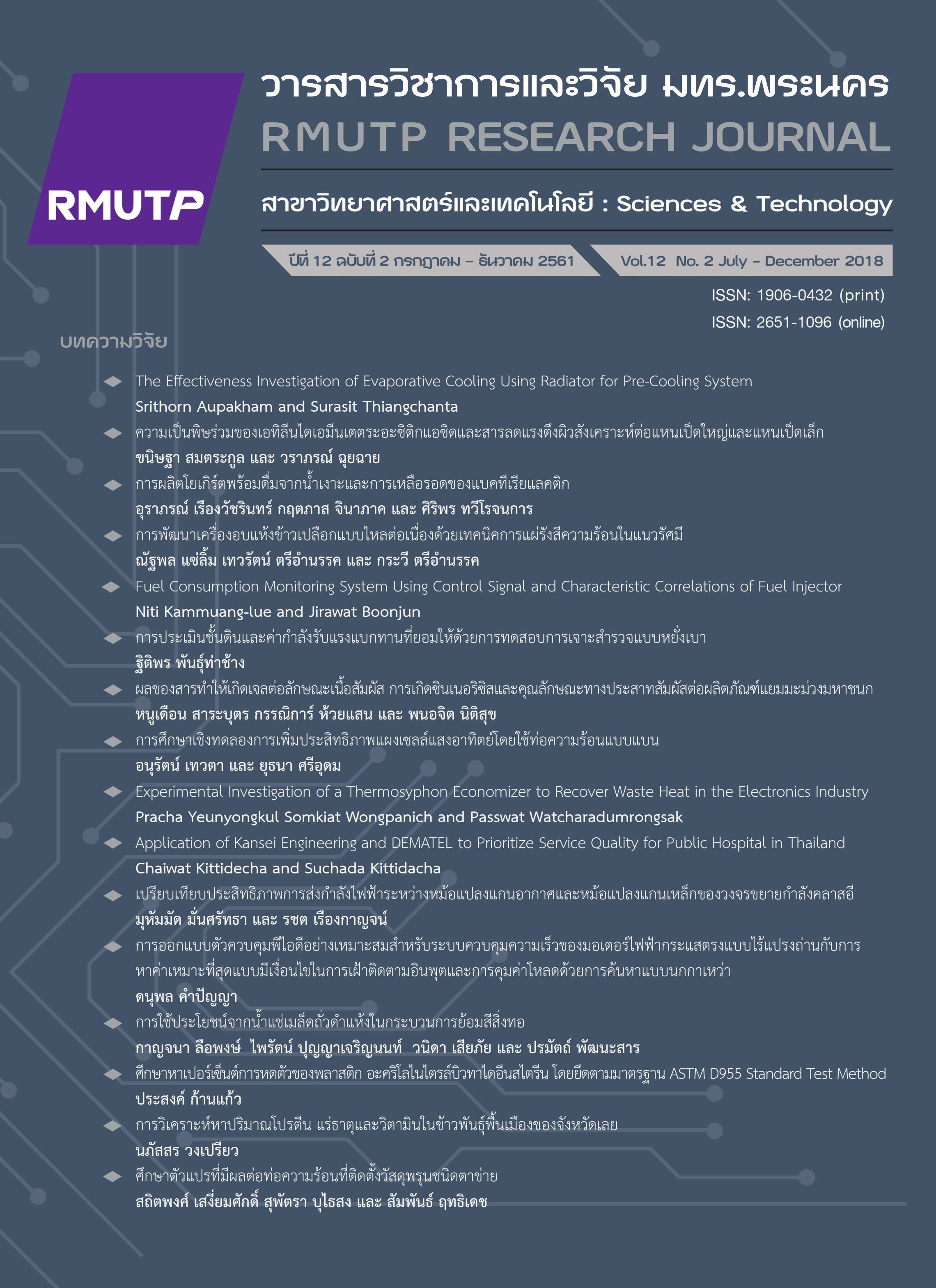Optimal PID Controller Design for BLDC Motor Speed Control System with Input Tracking and Load Regulating Constrained Optimization by Cuckoo Search
Main Article Content
Abstract
Metaheuristic optimization approach has become the new framework for control synthesis. The main purposes of the control design are input (command) tracking and load (disturbance) regulating. This research proposes an optimal proportional-integral-derivative (PID) controller design for the brushless dc (BLDC) motor speed control system with input tracking and load regulating constrained optimization by using the cuckoo search (CuS), one of the most efficient population-based metaheuristic optimization techniques. The sum-squared error between the referent input and the controlled output is set as the objective function to be minimized. The rise time, the maximum overshoot, settling time and steady-state error are set as inequality constraints for tracking purpose, while the regulating time and the maximum overshoot of load regulation are set as inequality constraints for regulating purpose. Results obtained by the CuS will be compared with those obtained by the particle swarm optimization (PSO) and genetic algorithm (GA). From simulation results, it was found that the parameters of CuS is optimal than both PSO and GA for BLDC motor speed control system satisfying the preset input tracking and load regulating constraints. In addition, the simulation results are confirmed by the experimental ones from the BLDC motor speed control system developed in real laboratory.
Article Details
References
[2] J. J. Rubio, “Hybrid controller with observer for the estimation and rejection of disturbances,” ISA Transactions, Vol. 65, pp. 445-455, 2016.
[3] N. Minorsky, “Directional stability of automatically steered bodies,” ASNE, Vol. 34, pp. 284, 1922.
[4] J. J. Rubio, P. Cruz, L. A. Paramo, J. A. Meda, D. Mujica and R. S. Ortigoza, “PID anti-vibation control of a robotic arm,” IEEE Latin America Transactions, Vol. 14(7), pp. 3144-3150, 2016.
[5] V. Zakian, Control Systems Design: A New Framework, Springer-Verlag, 2005.
[6] Y. Mitsukura, T. Yamamoto and Kaneda, “A design of self-tuning PID controller using a genetic algorithm,” in Proc. of the International Conference on American Control Conference, pp. 1361-1365, 1999.
[7] A. J. Mohammed, “A particle swarm optimization (PSO) based optimum of tuning PID controller for a separately excited DC motor (SEDM),” Eng. & Tech. Journal, Vol. 29(16), pp. 3322- 3323, 2011.
[8] X. S. Yang and S. Deb, “Cuckoo search via Lévy flights,” World Congress on NaBIC2009, 2009, pp. 210–214.
[9] X. S. Yang “Firefly Algorithm,” Stochastic Test Functions and Design Optimization, Bio-Inspired Computation, Vol. 2, No. 2, pp. 78–84, 2010.
[10] X. S. Yang and S. Deb “Engineering Optimisation by Cuckoo Search,” Mathematical Modelling and Numerical Optimisation, Vol. 1(4), pp. 330–343, 2010.
[11] X. S. Yang, and S. Deb “Multiobjective cuckoo search for design optimization,” Computers and Operations Research, Vol. 40(6), pp. 1616–1624, 2013.
[12] V. K. R. S. Patel and A.K. Pandey, “Modeling and Performance Analysis of PID controlled BLDC Motor and Different Schemes of PWM controlled BLDC motor,” IJSRP, pp.1–14, 2013.
[13] MATLAB/SIMULINK User’s Guide, The Math Works Inc., Natick, MA, 1998.
[14] Texas Instruments, TMS320F28335, Digital Signal Controller, 2007.


